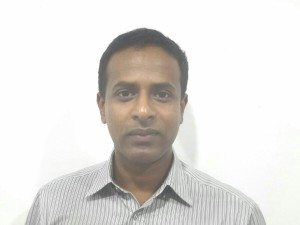Wave Making Resistance – Best Example.
Excerpts from the IMarEST Condition Based Maintenance Conference.
While the 6th condition based maintenance conference came to an end, we captured some fantastic presentations from various speakers and here is one interesting aspect where Mr Amitava Talukdar, who heads the Energy efficiency project under Viswa Lab, presented on wave making resistance.
We all know what is a wave making resistance when it comes to a ship’s performance. But here are our views where a wave making resistance was best explained during the condition based maintenance conference.
A ship’s’ total resistance = Air resistance + Wave making resistance + Viscous resistance
Wave making resistance is one where the power from the ship’s engines are wasted in creating waves.
Mr Amit, further explained on this, by stating that the power lost in creation of waves can be visualized with the above image. The power lost, in simple terms, is equivalent to the total amount of water or volume of water displaced by the ship as it sails through, which can be seen as a wake. The power lost can be visualized in terms of number of wave ripples, height of wake created and the distance it travels due to ship’s speed. Though his main topic of presentation was on Hull & Propeller condition based and performance based maintenance, we particularly liked the way he presented the wave making resistance.
Watch out this space for more updates from other speakers where they revealed fantastic insights at the IMarEST condition Based Maintenance conference.
About Mr Amitava Talukdar:
 Mr Amitava Talukdar has lead a team of engineers and researchers in the development of a fully automated, real-time energy efficiency monitoring system for the last three years. This has culminated to a commercialized product and has been successfully installed in a number of vessels. Evaluation of operational efficiency of hull and propeller, engine performance, optimum trim and speed to name few can be carried out with this system. He is also involved in the development of acoustic emission based liner scuffing detection system. He holds a Master’s degree in Precision engineering from NTU, Singapore on top of Marine engineering and COC.
Mr Amitava Talukdar has lead a team of engineers and researchers in the development of a fully automated, real-time energy efficiency monitoring system for the last three years. This has culminated to a commercialized product and has been successfully installed in a number of vessels. Evaluation of operational efficiency of hull and propeller, engine performance, optimum trim and speed to name few can be carried out with this system. He is also involved in the development of acoustic emission based liner scuffing detection system. He holds a Master’s degree in Precision engineering from NTU, Singapore on top of Marine engineering and COC.
Please Feel Free to Download the VEEMS (Viswa Energy Efficiency Management System) Architecture and Supplement below:


















